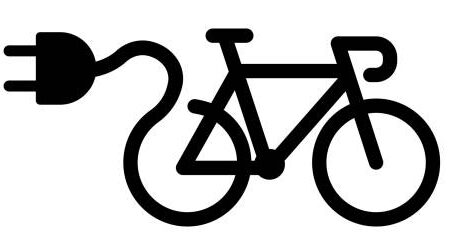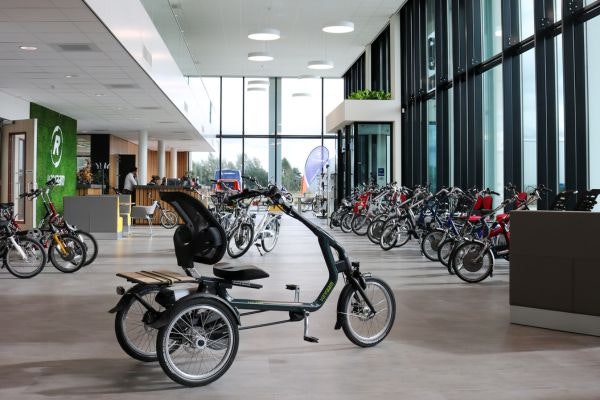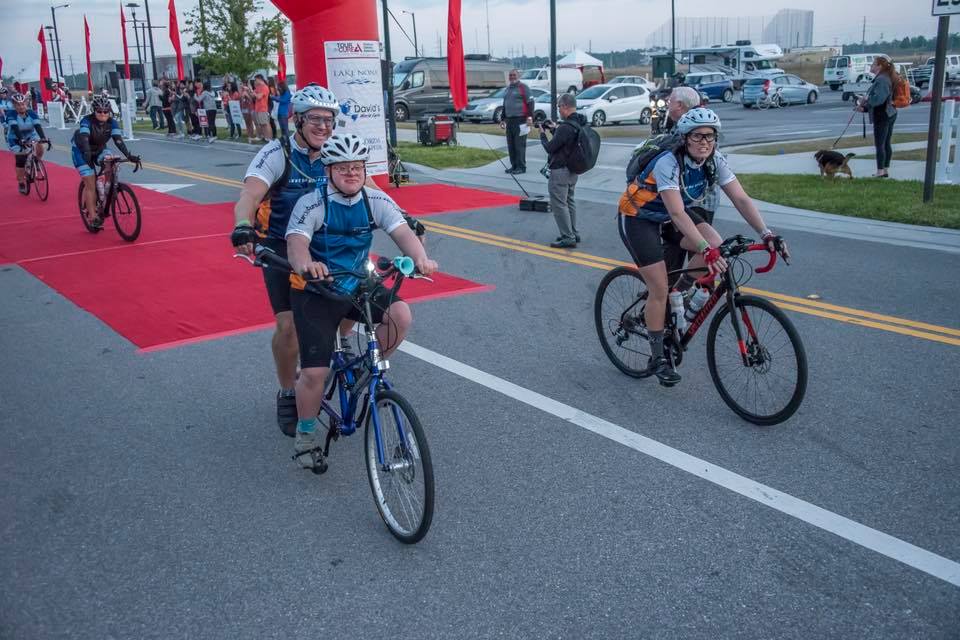Understanding Your Needs: A Guide to Choosing the Right Adaptive Bicycle
Selecting the perfect bicycle for people with disabilities requires careful consideration of individual needs and limitations. Different disabilities present unique challenges. Physical strength, balance, coordination, and range of motion all significantly influence the type of bicycle best suited to an individual. For example, someone with limited upper body strength might find a handcycle more suitable than a traditional bicycle. Conversely, someone with good upper body strength but limited leg mobility might benefit from a recumbent trike or a tandem bicycle. Before beginning your search, ask yourself these crucial questions: What are my primary physical limitations? What level of assistance do I need? What type of terrain will I be riding on? What is my fitness level? Consulting with an occupational therapist or physical therapist can provide valuable insights and personalized recommendations, ensuring the chosen bicycle optimally supports your needs and promotes safe and enjoyable cycling. Finding the right bicycles for people with disabilities is a process that benefits from expert guidance.
The process of selecting appropriate bicycles for people with disabilities also involves evaluating the specific features available. Consider factors such as adjustable seating, specialized handlebars, and assistive technologies like electric assist. These features enhance comfort, control, and overall riding experience. Adaptive bicycles offer a range of customizations. For instance, adjustable handlebars can improve posture and reduce strain on the wrists and shoulders. Similarly, adaptive seats can provide crucial support and comfort during prolonged rides. These modifications make cycling accessible and enjoyable for a wider range of individuals. The questions you ask yourself should consider the long-term implications of your choice, ensuring the bicycle remains suitable and comfortable as your needs may evolve over time. This ensures you select a bicycle that serves as a valuable tool for both fitness and personal enjoyment.
Remember, the ideal bicycle for one person might not be suitable for another. Individual needs vary greatly. A thorough assessment of physical capabilities and limitations is paramount. This careful evaluation lays the groundwork for selecting an adaptive bicycle that promotes independence, improves physical fitness, and enhances the overall quality of life. Exploring the different options available and understanding the features specific to each model allows individuals to find bicycles for people with disabilities that best meet their specific needs. This personalized approach significantly contributes to a successful and satisfying cycling experience. The right adaptive bicycle empowers individuals to enjoy the numerous physical and social benefits that cycling offers.
Types of Adaptive Bikes: Exploring Your Options
Adaptive bicycles offer a wide range of options to meet diverse needs. Handcycles, for instance, are excellent choices for individuals with limited lower-body mobility. These bicycles propel forward using hand cranks, offering a fantastic cardiovascular workout and a sense of freedom. They are available in various styles, from lightweight models for recreational use to more robust options for long-distance cycling. Recumbent trikes provide increased stability and comfort, making them ideal for those with balance challenges or who prefer a more relaxed riding position. Their low center of gravity enhances stability, while the three-wheeled design eliminates the need for constant balancing. Recumbent trikes are particularly well-suited for people with disabilities who want a comfortable and safe riding experience. Bicycles for people with disabilities also encompass tandems, where two riders share the workload. This option is beneficial for individuals who need assistance with pedaling or steering. One rider can provide support, while the other enjoys the experience of cycling. The design of tandem bicycles offers flexibility in the support provided, accommodating varied needs.
Beyond these primary types, many bicycles for people with disabilities incorporate specialized attachments. Adaptive seats provide customized support and adjustability for optimal comfort and posture. These can range from simple modifications to complex, custom-designed seats addressing specific postural needs. Steering modifications, such as specialized handlebars or alternative steering mechanisms, enhance control and accessibility for individuals with limited hand or arm mobility. Assistive technologies, including electric assist motors, can help overcome physical limitations and make cycling more accessible to a wider range of individuals. The Trek Allant+ 8, for example, offers electric assist, making it a suitable option for those needing extra power. Choosing the right adaptive bike involves carefully considering individual needs, and seeking expert advice from adaptive bicycle specialists is crucial. The combination of different features, combined with professional fitting and adjustment, enables the creation of a truly personalized cycling experience. Finding the perfect fit significantly impacts comfort, safety, and the overall enjoyment of cycling for those with disabilities.
Many innovative designs exist within the realm of bicycles for people with disabilities. Consider bikes with specialized frames designed to accommodate various seating positions and postural needs. These often include adjustable components that can be tailored to individual preferences and physical requirements. Some bikes are equipped with innovative braking systems, allowing for easier control and reduced strain on the hands and arms. Other modifications might include specialized gearing systems that adjust pedal resistance, making cycling more manageable for individuals with varying levels of strength and stamina. Remember, the goal is to find bicycles for people with disabilities that foster independence, enhance fitness, and provide a positive and enjoyable recreational experience. The options are extensive and continue to evolve, ensuring that cycling remains a viable and rewarding activity for people of all abilities.
How to Find a Bike that Fits: Sizing and Adjustments
Finding the right fit is crucial when selecting bicycles for people with disabilities. Proper sizing and adjustments ensure comfort, safety, and efficient pedaling. A professional bike fitting is highly recommended. Experienced fitters understand the unique needs of adaptive cyclists. They can assess individual physical limitations and make necessary adjustments to the bicycle’s components. This process involves determining the appropriate frame size, saddle height, handlebar position, and other crucial adjustments specific to the type of adaptive bicycle. For example, handcycles require careful consideration of the seat’s position and armrest adjustments to promote comfortable posture and efficient propulsion. Recumbent trikes necessitate attention to back support and leg extension. The goal is to optimize posture, reduce strain, and maximize comfort and performance for the rider. Finding a local specialist experienced with bicycles for people with disabilities is paramount; many bike shops offer specialized fitting services, or can refer clients to professionals who do.
Frame size significantly impacts comfort and performance. An improperly sized frame can lead to discomfort, inefficient pedaling, and potential injuries. Saddle height is another crucial adjustment that influences comfort and power transfer. The saddle should be positioned to allow for a slight bend in the knee at the bottom of the pedal stroke. Handlebar position affects posture, comfort, and control. Adjustments may be needed to accommodate different physical limitations and preferences. This may include specialized components such as adjustable stems, handlebars, or grips that accommodate various hand sizes, grips, and ranges of motion. Consider factors such as reach, drop, and width to find the most comfortable and functional position for efficient control. Adaptive bicycles often require more extensive adjustments than standard bicycles, making professional fitting services an invaluable asset for optimizing performance and preventing discomfort or injury. Remember that a professional fitting is a personalized process. The fitter will work with you to make adjustments until you achieve the optimal comfort and performance levels.
Beyond the initial fitting, regular adjustments may be necessary as the rider’s needs or physical abilities change. These adjustments ensure that the bicycle remains comfortable, safe, and efficient over time. Remember to check your bicycle’s fit regularly, and don’t hesitate to return to the shop or specialist for further adjustments. Finding a bike that fits perfectly is vital for enjoying the many benefits that cycling provides. Properly fitted bicycles for people with disabilities not only increase comfort but also promote safe and enjoyable riding experiences. The right fit significantly improves the overall riding experience and the therapeutic benefits of cycling, promoting increased participation and enjoyment.
Safety First: Essential Gear and Safety Tips for Adaptive Cyclists
Safety is paramount when cycling, especially for individuals using bicycles for people with disabilities. A properly fitted helmet is the most crucial piece of safety equipment. Helmets designed with adaptive features, offering greater adjustability and comfort for various head shapes and sizes, are readily available. Consider helmets with enhanced visibility features, such as bright colors or reflective strips, to increase awareness among other road users. Appropriate clothing plays a vital role in safety. Bright, highly visible clothing helps drivers and pedestrians see cyclists more easily, particularly in low-light conditions. Reflective elements on clothing further enhance visibility. Choosing clothing that allows for a full range of motion is essential for comfort and safe handling of bicycles for people with disabilities. Gloves can improve grip and protect hands during falls.
Safe riding techniques are crucial for adaptive cyclists. Proper braking techniques vary depending on the type of bicycle used. Understanding how to brake effectively and safely is essential. Practice braking in a controlled environment before venturing onto busy roads. Navigating different terrains requires skill and awareness. Be mindful of uneven surfaces, potholes, and obstacles that could pose risks. Smooth and controlled movements are key to maintaining balance and stability. Familiarize yourself with the specific handling characteristics of your adaptive bicycle. Understanding its limitations and capabilities will enable you to ride more safely and confidently. Adaptive cyclists should always be aware of their surroundings. Pay attention to traffic, pedestrians, and other potential hazards. Using hand signals effectively is crucial for communicating intentions to other road users. Regular maintenance of bicycles for people with disabilities is crucial. Ensure brakes, tires, and other components are in good working order. Regular checks prevent mechanical failures that could lead to accidents. Always remember that safety is an ongoing process, requiring vigilance and proactive measures.
For those using bicycles for people with disabilities, additional safety considerations may apply. Depending on the type of adaptive equipment used, certain maneuvers might require more caution. For example, individuals using handcycles may need to be extra vigilant when negotiating inclines or declines. Those using trikes should be aware of their wider turning radius. Always prioritize safety and assess the environment before commencing a ride. Remember that adapting to a new cycling experience takes time and patience. Start slowly, gradually increasing distance and complexity as confidence and skill develop. Never push oneself beyond one’s comfort zone, especially when learning new skills. Seeking guidance from experienced adaptive cyclists or professionals can be invaluable. Their expertise can provide valuable insights and support during the learning process. By prioritizing safety, adaptive cyclists can enjoy the many benefits of cycling while minimizing the risk of accidents.
Exploring the Benefits: Physical and Mental Wellness Through Cycling
Cycling offers a multitude of physical and mental health advantages for people with disabilities. Adaptive bicycles provide an accessible way to enjoy the numerous benefits of regular physical activity. Improved cardiovascular health is a significant benefit. Regular cycling strengthens the heart and improves circulation. This leads to lower blood pressure and reduced risk of heart disease. Bicycles for people with disabilities offer a low-impact exercise option, minimizing stress on joints. This is particularly beneficial for individuals with arthritis or other joint conditions. Adaptive bikes promote muscle strength and endurance. Pedaling and maintaining balance engage multiple muscle groups, leading to increased strength and stamina over time.
Beyond physical improvements, cycling significantly enhances balance and coordination. The act of riding a bicycle, even an adaptive one, requires constant adjustments and balance corrections. This improves proprioception—the body’s sense of its position in space. Improved balance translates into better stability and reduced risk of falls in daily life. For individuals with disabilities, this improvement can significantly enhance independence and quality of life. Cycling also provides substantial mental health benefits. Physical activity releases endorphins, which have mood-boosting effects. The rhythmic nature of cycling can be meditative, reducing stress and anxiety. Participating in group rides or joining cycling clubs creates social interaction and a sense of community. This combats isolation and fosters a sense of belonging, which is crucial for mental well-being. These bicycles for people with disabilities are not just forms of transportation; they are tools for improved physical and mental health.
The positive impacts extend beyond the individual. Increased physical activity and improved mental health contribute to a higher quality of life. Participation in adaptive cycling programs often leads to increased self-esteem and confidence. This empowers individuals to overcome challenges and pursue new goals. The social connections made through cycling further enrich lives, creating supportive networks and friendships. Adaptive bicycles unlock opportunities for exploration and independence. They provide a means to access parks, trails, and communities that may have otherwise been inaccessible. Ultimately, adaptive cycling is a powerful tool for improving health, fostering independence, and enhancing the overall well-being of people with disabilities. These bicycles for people with disabilities offer a pathway to a more active, fulfilling, and healthier life.
Resources and Support: Connecting with the Adaptive Cycling Community
Finding a supportive community can significantly enhance the adaptive cycling experience. Joining a cycling club or group specifically designed for people with disabilities offers invaluable benefits. These groups provide opportunities to connect with others facing similar challenges. Members can share experiences, advice, and encouragement, fostering a sense of belonging and camaraderie. The shared passion for cycling creates a strong bond, making the journey more enjoyable and rewarding. Such networks are essential for newcomers to learn from experienced adaptive cyclists, receiving practical tips and gaining valuable insights. The collective knowledge within these communities is a tremendous asset. Participating in group rides not only provides social interaction but also promotes a sense of safety and shared support.
Beyond in-person groups, online forums and communities dedicated to bicycles for people with disabilities provide another avenue for connection and support. These platforms offer a space to ask questions, share information, and find solutions to common challenges. The collective wisdom and diverse perspectives within these online communities are invaluable. Participants can exchange tips on equipment, maintenance, and adaptive cycling techniques. They can also discover local resources and events. Engaging with these online communities can help foster a deeper understanding of adaptive cycling and its potential benefits. For those new to adaptive cycling, these online networks are an excellent resource for building confidence and gaining practical advice.
The power of shared experience is undeniable. Connecting with others who understand the unique aspects of adaptive cycling can make a significant difference. Whether through in-person clubs or online forums, these communities offer invaluable support and encouragement. Finding this support network is crucial for fostering a positive and successful adaptive cycling journey. Remember, the journey to finding the perfect bicycle for people with disabilities is often enhanced by the supportive environment of a community. This support extends beyond practical advice, creating a space for shared experiences and mutual encouragement, making the entire process more fulfilling and enjoyable.
Budgeting for Your Adaptive Bicycle: Financing Options and Considerations
Purchasing bicycles for people with disabilities often involves significant financial considerations. Adaptive bikes can range widely in price depending on features, customization, and brand. Creating a realistic budget is the first step. Research different models and compare prices. Consider essential features versus desirable ones. Prioritize functionality based on individual needs. This careful assessment helps determine a suitable price range for bicycles for people with disabilities.
Several financing options exist to help make adaptive bicycles more accessible. Explore grants specifically designed to support adaptive equipment for people with disabilities. Many organizations offer such grants. Check with local disability service providers or government agencies. Some insurance plans may cover adaptive equipment, depending on the policy and medical necessity. Contact your insurance provider for details. Fundraising is another potential avenue. Platforms like GoFundMe can help you connect with supporters and raise funds towards your adaptive bike purchase. Consider organizing fundraising events in your community to build awareness and gather support.
Carefully consider all costs associated with purchasing bicycles for people with disabilities. Beyond the initial bike price, factor in costs for accessories. This may include specialized seats, adaptive hand cycles, or safety equipment. Regular maintenance and repairs should also be budgeted for. A well-maintained bike enhances longevity and safety. Plan for these costs to ensure the bike remains functional for years. Remember, investing in a suitable adaptive bike is an investment in independence, health, and improved quality of life. Choosing the right financing option ensures this investment is achievable.
Taking the First Ride: Tips for Beginners and Building Confidence
Embarking on your adaptive cycling journey is an exciting step. Beginners should prioritize comfort and safety. Start with short rides on familiar, smooth surfaces. Gradually increase the duration and distance as confidence grows. Regular practice builds muscle memory and coordination, essential for safe handling of bicycles for people with disabilities. Focus on mastering basic maneuvers like starting, stopping, and turning before venturing onto more challenging terrains. Remember, consistency is key. Even short, frequent rides contribute significantly to progress.
Finding a supportive environment enhances the learning experience. Consider joining a local adaptive cycling group or club. These groups provide opportunities to connect with experienced riders, share tips, and build a sense of community. Peer support can be invaluable in overcoming challenges and maintaining motivation. A supportive atmosphere allows individuals to feel comfortable taking risks and pushing their limits, accelerating their progress. Moreover, instructors experienced with adaptive bicycles for people with disabilities can offer personalized guidance and adjustments to ensure a safe and enjoyable experience.
Building confidence is a gradual process. Celebrate small victories. Every successful ride, no matter how short, represents progress. Don’t be afraid to ask for help or assistance when needed. Remember, progress is not always linear. There will be days when challenges arise. Persistence and a positive attitude are key. Adaptive bicycles for people with disabilities offer a unique opportunity to experience the freedom and joy of cycling. With patience, practice, and a supportive network, every individual can achieve their cycling goals, enhancing their physical and mental well-being.




